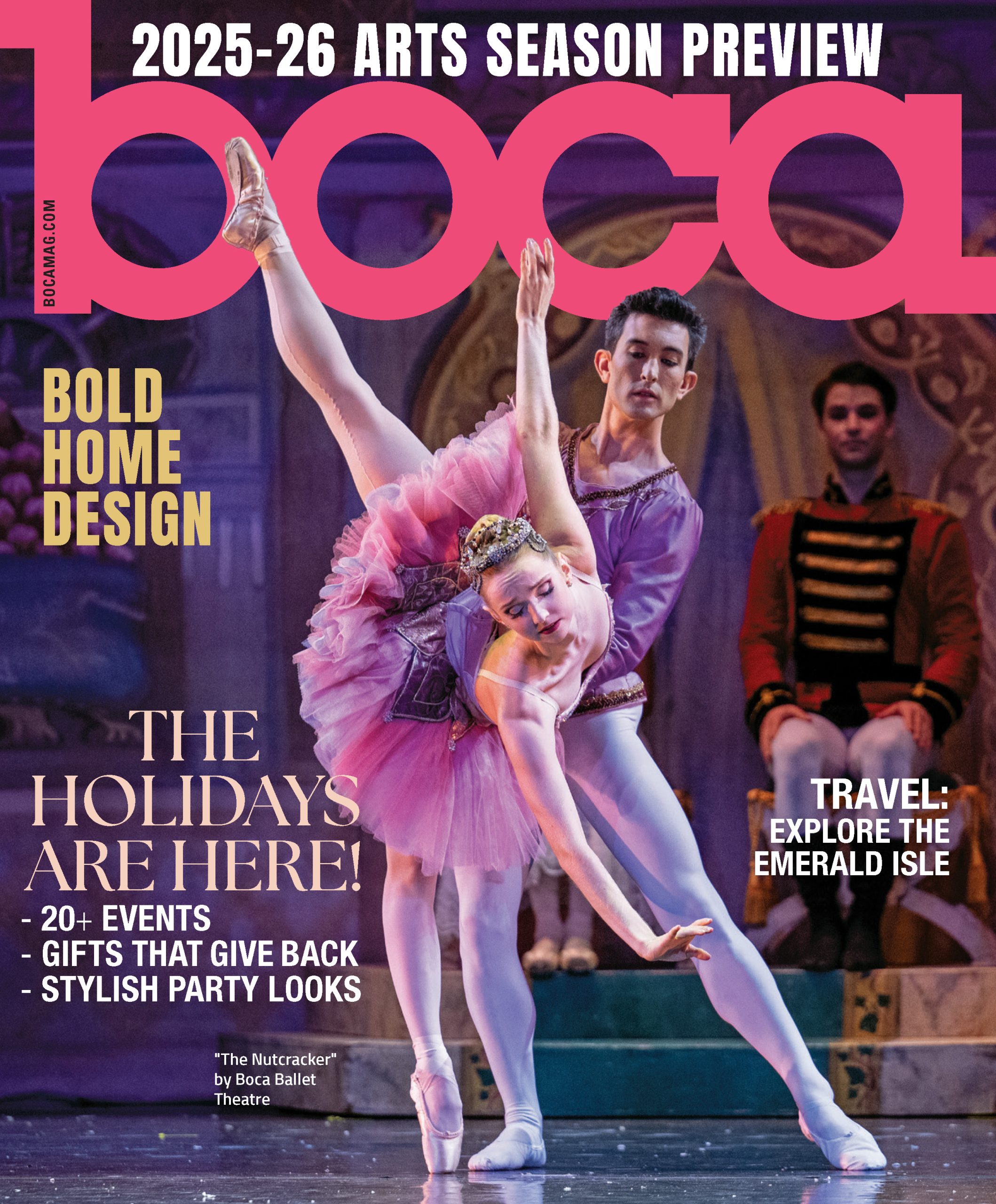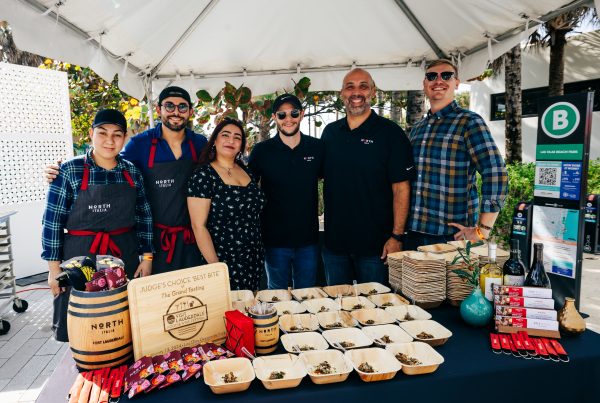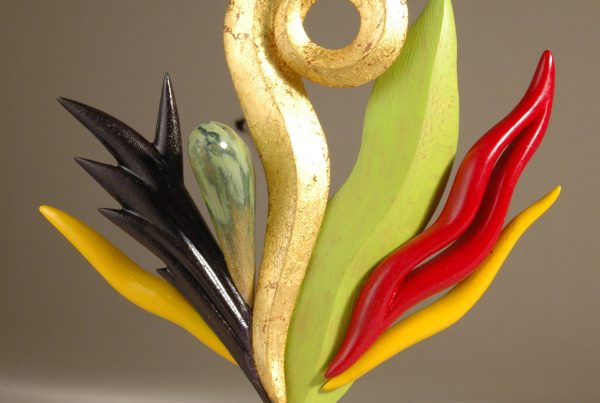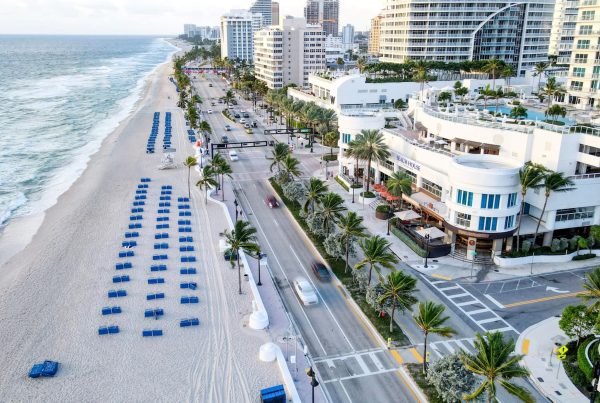A legendary West Palm Beach nightclub is ready for its second act
An air of nobility surrounded the African-American ballrooms and juke joints of the Jim Crow south. Baltimore had the Royal Theatre; Atlanta, the Royal Peacock. There was the Harlem Duke Social Club in Mobile; Club Paradise, in Memphis; the Ritz, in Jacksonville.
The Palm Beaches had the Sunset Lounge.
Originally christened the Sunset Royale nightclub, the Lounge was the centerpiece of West Palm Beach’s historic Northwest neighborhood, on Eighth Street just west of Rosemary Avenue. Just over the bridge on Palm Beach island, Blacks may have been relegated to second-class citizens cleaning the mansions of their white employers. But within the doors of the Sunset, they were guests of honor, as they witnessed some of the most influential musicians in American history holding court.

The Sunset Lounge in its heyday
One night, it might be Louis Armstrong; the next, Cab Calloway. Later on, Ray Charles or James Brown would appear, almost always for a single night only, in performances that raged until 2 in the morning. News of the concerts spread the old-fashioned way, through word of mouth in the neighborhood’s cultural exchanges, its barbershops and barbecue restaurants and social clubs.
Venues like the Sunset Lounge were key links on the “chitlin’ circuit,” the informal touring route for Black jazz, blues and soul stars to ply their trades in the segregated south. To this day, debate continues as to the respectability of the chitlin’ circuit, whose venues ranged from elegant concert halls to tobacco barns, warehouses and makeshift venues with no running water. Author Preston Auterbach, in his lively chronicle of the era, The Chitlin’ Circuit and the Road to Rock ‘n’ Roll, summarizes the negative perception of the circuit, the emphasis his: “Artists were relegated to the chitlin’ circuit. Working it was a grind. Even its title is depressing, derived from what black people call a hog’s small intestine, the cuisine of relegation. This chitlin’ circuit seemed to be an unpleasant place, located in our nation’s bowels, and better left unexplored.”

Lionel Hampton performing at the Sunset Lounge
The Sunset Lounge was anything but. With its high ceilings, barreled roof, neon lighting and arched windows, it was a cathedral of culture, welcoming tuxedoed men and gowned women—of all races—to its cavernous ballroom. For headlining acts like Duke Ellington and Count Basie, the floor would be jam-packed with 1,000 attendees shoulder-to-shoulder.
“I have been in West Palm Beach since 1962, and that was the only place that persons of my ethnicity were allowed,” recalls Ike Robinson, former city commissioner of West Palm Beach. “We couldn’t go to the Breakers. We couldn’t go to Bradley’s. We couldn’t go to the Everglades Club.
“A lot of people think the Sunset was the entertainment mecca, and it was,” Robinson adds. “But I think the Sunset was the cultural equator. The Sunset provided for the community to come together, intermingle, socialize and learn. I’m talking about the bougies, the potentates, the workingman, the people who serve the people in Palm Beach.”
The Sunset Lounge may soon regain its status as a community linchpin. The two-story building, whose star power gradually dimmed following desegregation, is in the final touches of a massive restoration from the West Palm Beach Community Redevelopment Agency. The CRA, which purchased the property in 2016, has pooled $12.5 million into a revitalization and expansion of the Lounge, in what is the largest public-private investment in the history of the Northwest neighborhood.

Photo: Greg Lovett/The Palm Beach Post via ZUMA Wire
“When the agency purchased the property, we recognized we would have to completely remove all of the interior improvements,” says Genia Baker, project manager for the Northwest district. “We had to gut the entire structure, making way for re-establishing the original floor plan. Based on community input, the agency mission was to make the Sunset Lounge a community focal point and entertainment venue, as it was from inception. We recognized there was little open space in the community, so we purchased the property directly south of the Sunset.”
She’s referring to the new Heart & Soul Park opposite the Lounge, with a playground, benches, water feature, green space and a piano-key pathway, to the tune of an additional $15 million in CRA investment. The response from Northwest residents has been overwhelmingly enthusiastic.
“[The Sunset] is the jewel and heart of the community,” Baker says. “The community is extremely excited about the notion that this will be, first of all, preserved, and then reopened back to its old glory.”
The Sunset’s origins date to 1926, when businessman Robert Saunders opened the property as a garage and service station with a rooftop garden. A ballroom and second-floor mezzanine with a bandstand were added a few years later, eventually eclipsing the venue’s original purpose. “There was this demand, and it snowballed into this wonderful place,” says Frederike Mittner, historic preservation planner for the city of West Palm Beach.
By 1936, jazz pioneers like Walter Barnes and his tuxedoed Royal Creolians would play the Sunset, with concert tickets running 55 cents; top-of-the-line acts ran $1.25 per person. Saunders did not live to see the Sunset reach its pinnacle: in 1936, he was shot and killed, inside the lounge, by a disgruntled employee. Five thousand people attended his funeral.
Dennis and Thelma Starks, who inherited the property from Robert’s widow in 1947, would shepherd the venue into its apex of influence. “They elevated it to the cultural center of the community,” Ike Robinson says. “It was under their tutelage. … The Sunset was really a pseudo-religious institution, beside the church and the family.”

Duke Ellington and his band perform at the Sunset Lounge
Thelma Starks, who died in 2018, often shared memories of the Lounge with the media. “My husband always insisted you dress properly at the Sunset,” she told a reporter, in 2002. “You didn’t come in looking like you were going to a picnic. He wanted you to come in with a coat on, a tie on and no hat. …When Louis Armstrong performed, more whites than anyone else turned out to attend. Everyone dressed up to go there. It was so glamorous.” With its 16-foot-high ceilings, polished wood walls and red drapes, the Sunset sought to rival whites-only ballrooms in its scale and elegance. Its sense of propriety extended to guests’ behavior. As longtime patron Emmett Cooper recalled to the Palm Beach Post in 1990, “There were certain things you just did not do at the Sunset, like swearing or using profane language and things like that.”
As late as 1992, artists like Bobby Bland toured the Sunset—tickets ran $10—but its day-to-day prominence dwindled following the dissolution of the chitlin’ circuit. “The circuit as we’ve come to know it … was eliminated by degrees as urban renewal programs eviscerated once vital black neighborhoods nationwide,” Lauterbach writes, in The Chitlin’ Circuit and the Road to Rock ‘n’ Roll. “Reminders of black Main Street’s importance to American culture were erased from sight.”
The new Sunset Lounge will be nothing if not a reminder of that importance, when it reopens this spring. The project is contracted to Cooper Construction Management & Consulting, a firm operated by one of the county’s largest African-American-owned general contractors. “There is a particular richness in its history, with roots in jazz and the many talented, legendary, African-American artists who performed here, so powerfully expressing their joy, their pain and their hope for a better day,” says Vice President Veronica Cooper. “This project moves me in a special way.”

Rendering of the revitalized Sunset Lounge
The project will increase the original Lounge’s capacity by 7,200 square feet, constituting a lobby, kitchen, broadcasting room, green room and dressing room, in addition to the restored bar and ballroom. Local music producer and programmer Darryl Bey hopes to recapture its history as a catch-all for Black music. “We’ll be doing R&B, blues, gospel, jazz, maybe some hip-hop,” he says. The CRA anticipates the venue will be used for music lessons, art exhibitions and performing arts classes.
The progress toward these goals was visible on a sweltering morning last summer, as construction workers in hardhats and face coverings labored on cranes and ladders. On the ground floor, Baker pointed out a relic that was uncovered during the stripping down of the property: the remnants of a drink menu, chiseled into the concrete, revealing that a gin fizz, once upon a time, cost 20 cents. “It’s our intention to recreate that somewhere in the building,” Baker says.
Upstairs, more wall text survived, in giant letters: “No dancing allowed in balcony,” a reminder, perhaps, of Thelma Starks’ strict rules for attendance—another something borrowed as the Sunset Lounge continues, we hope, to make history.
This story is from the January 2021 issue of Boca magazine. For more content like this, subscribe to the magazine.







